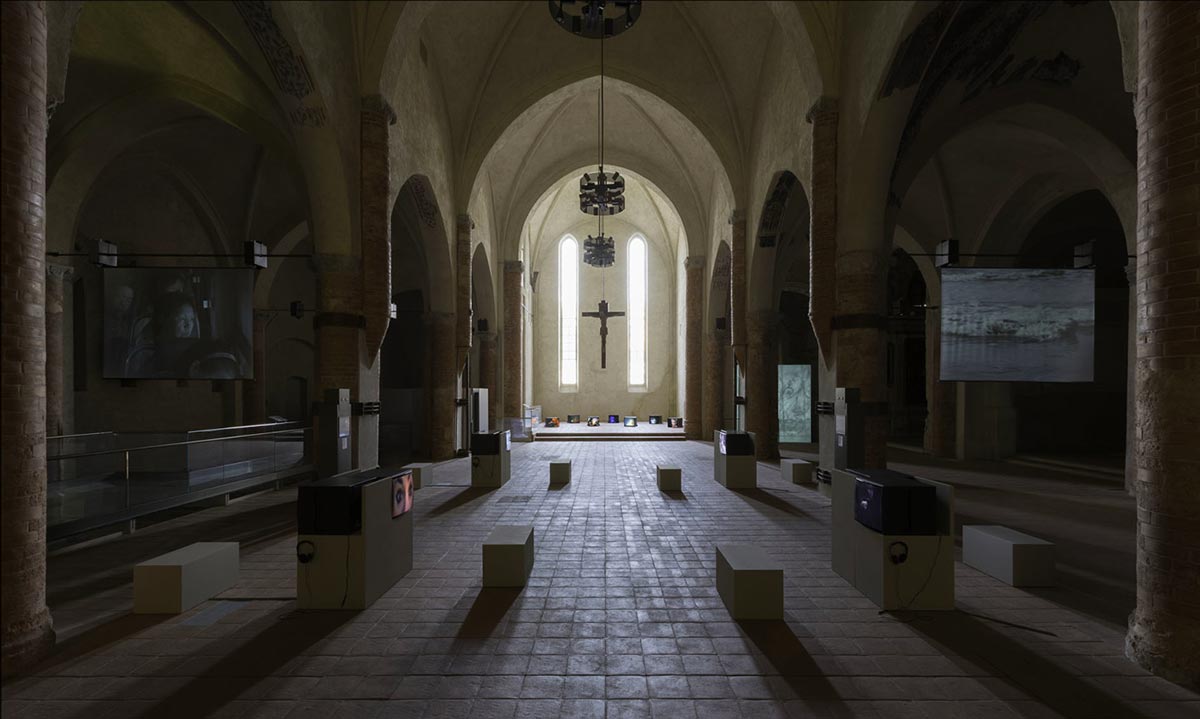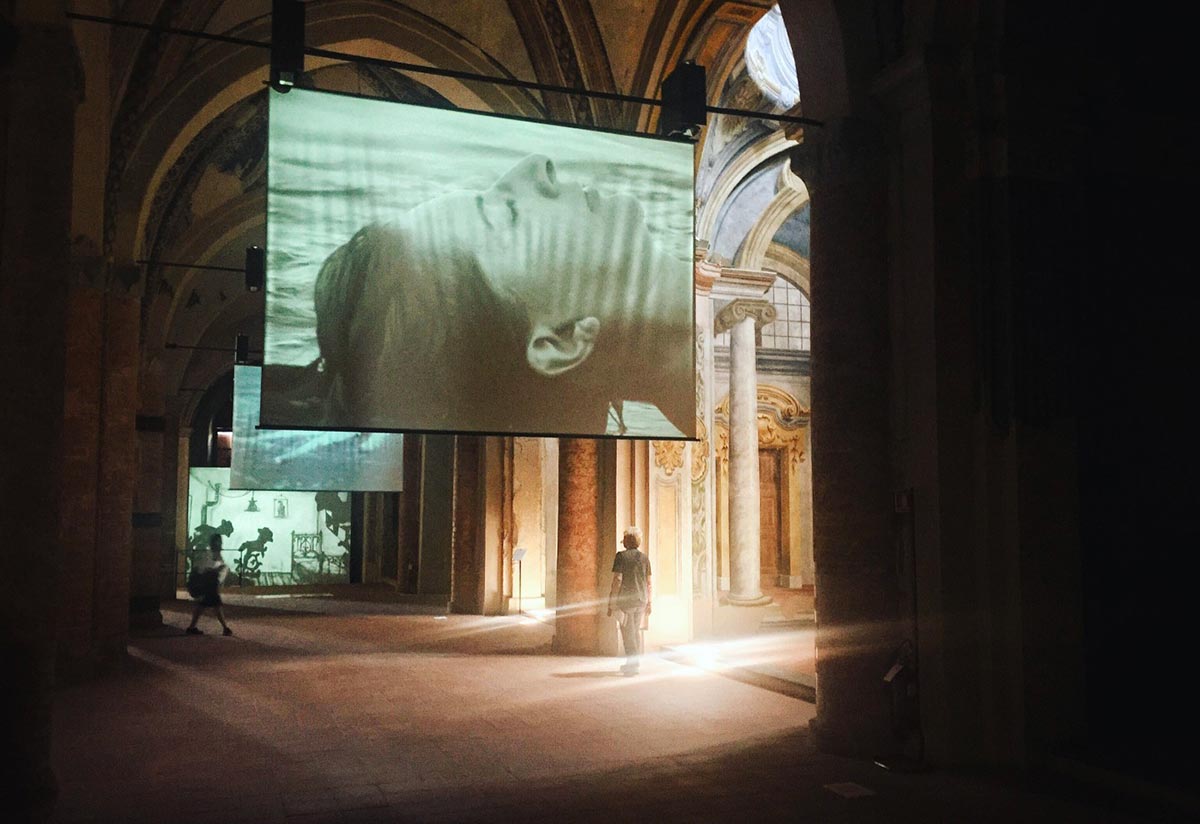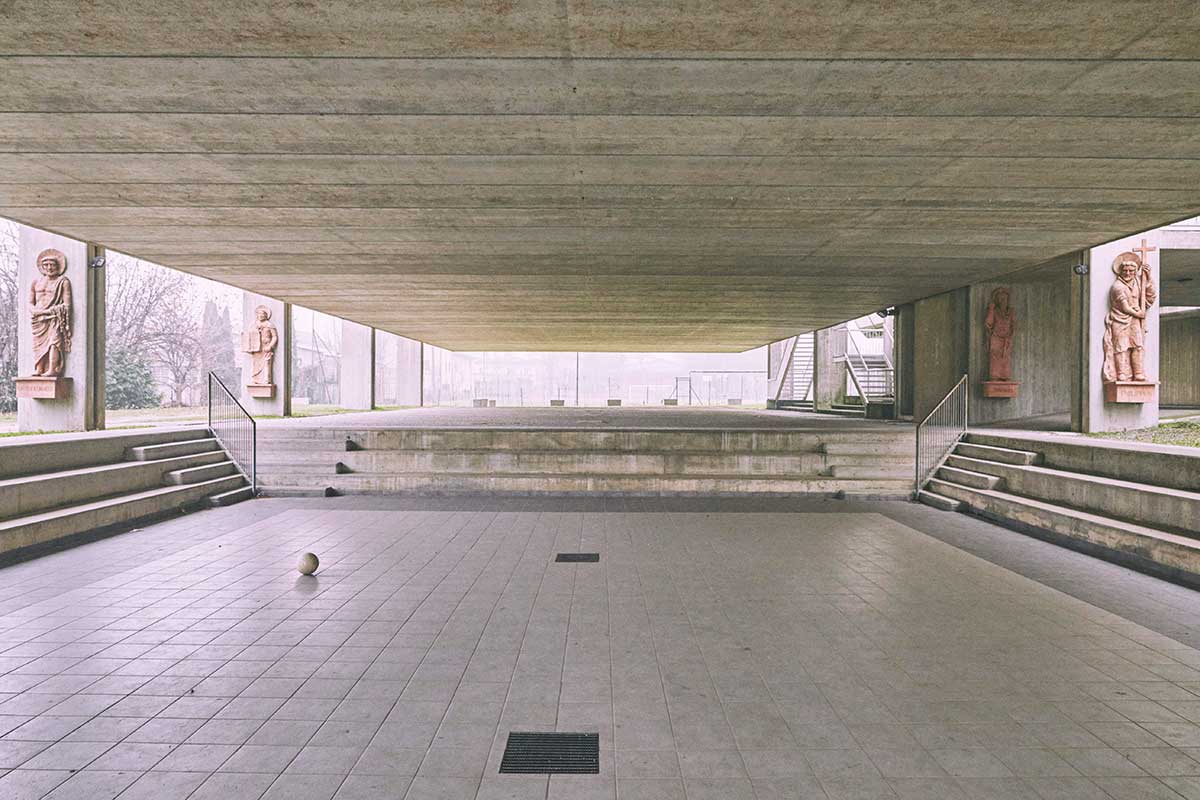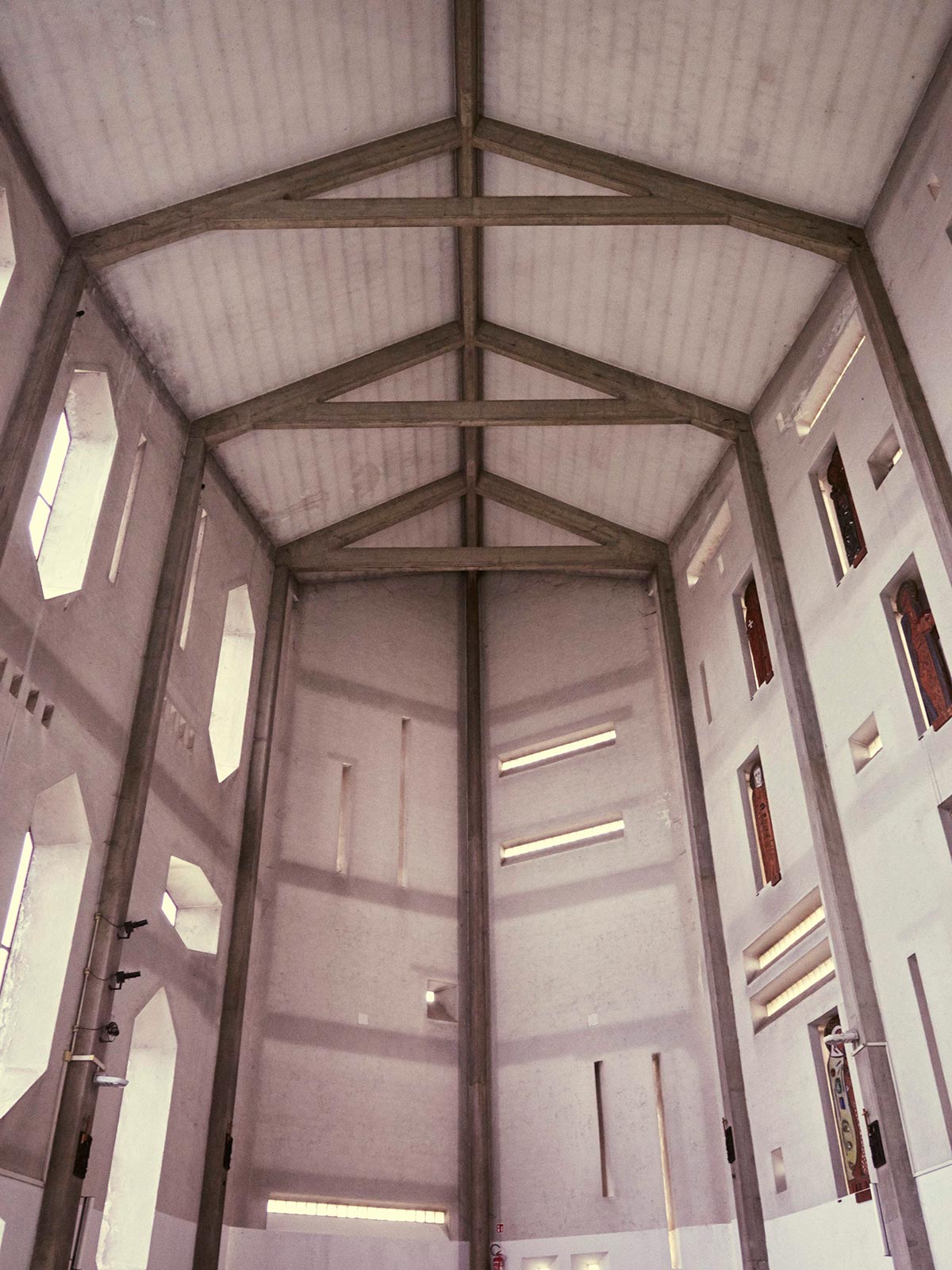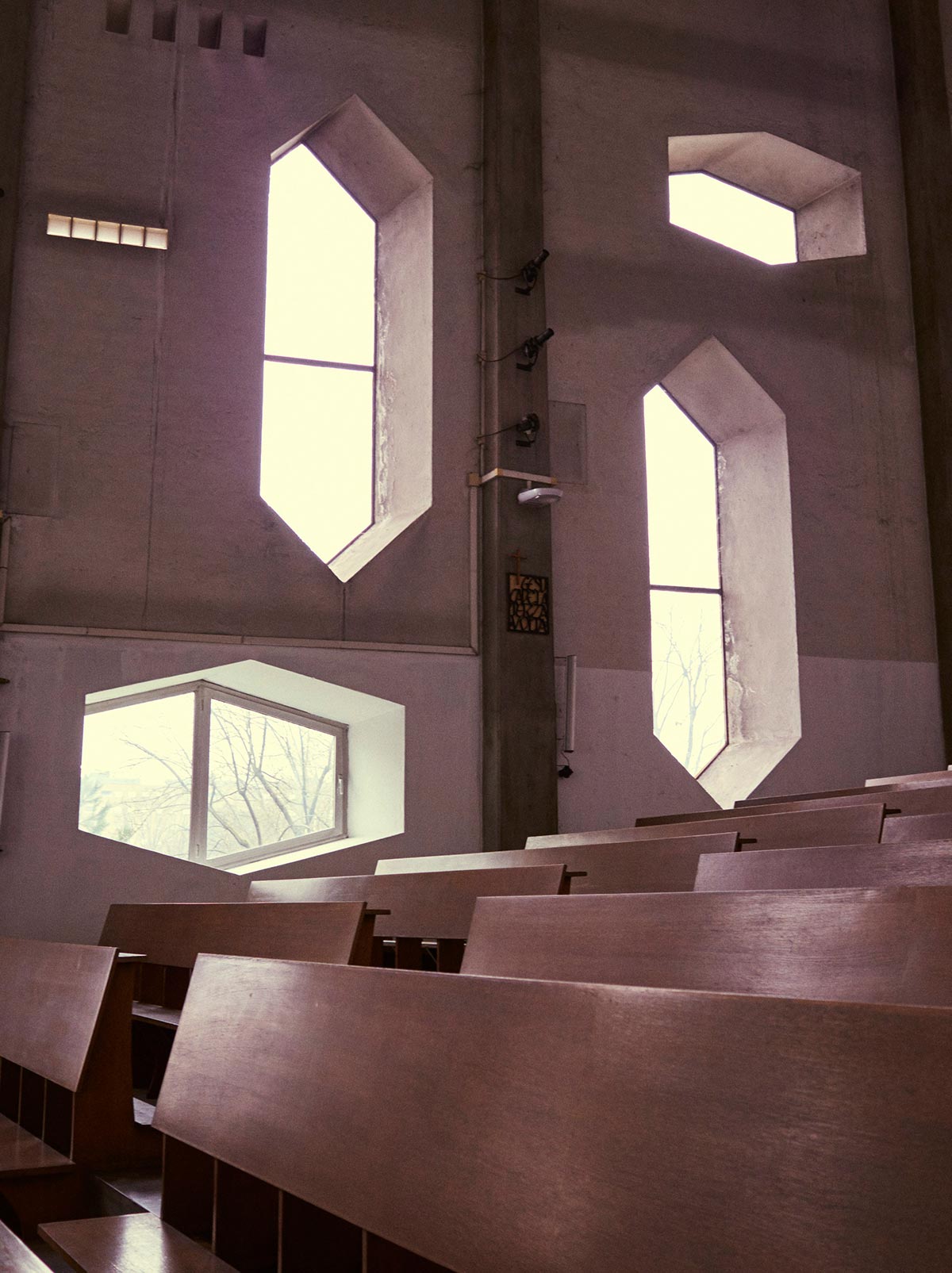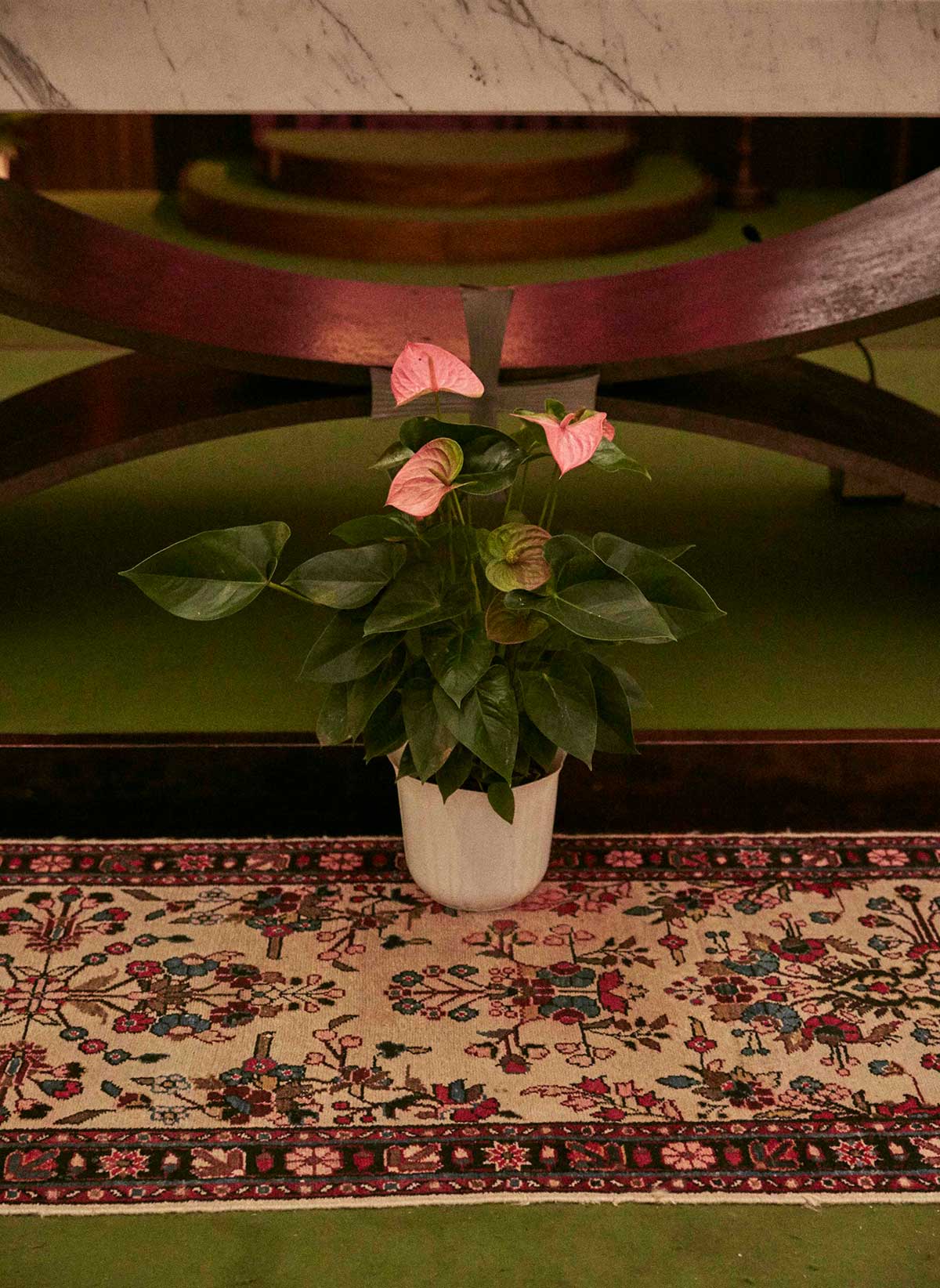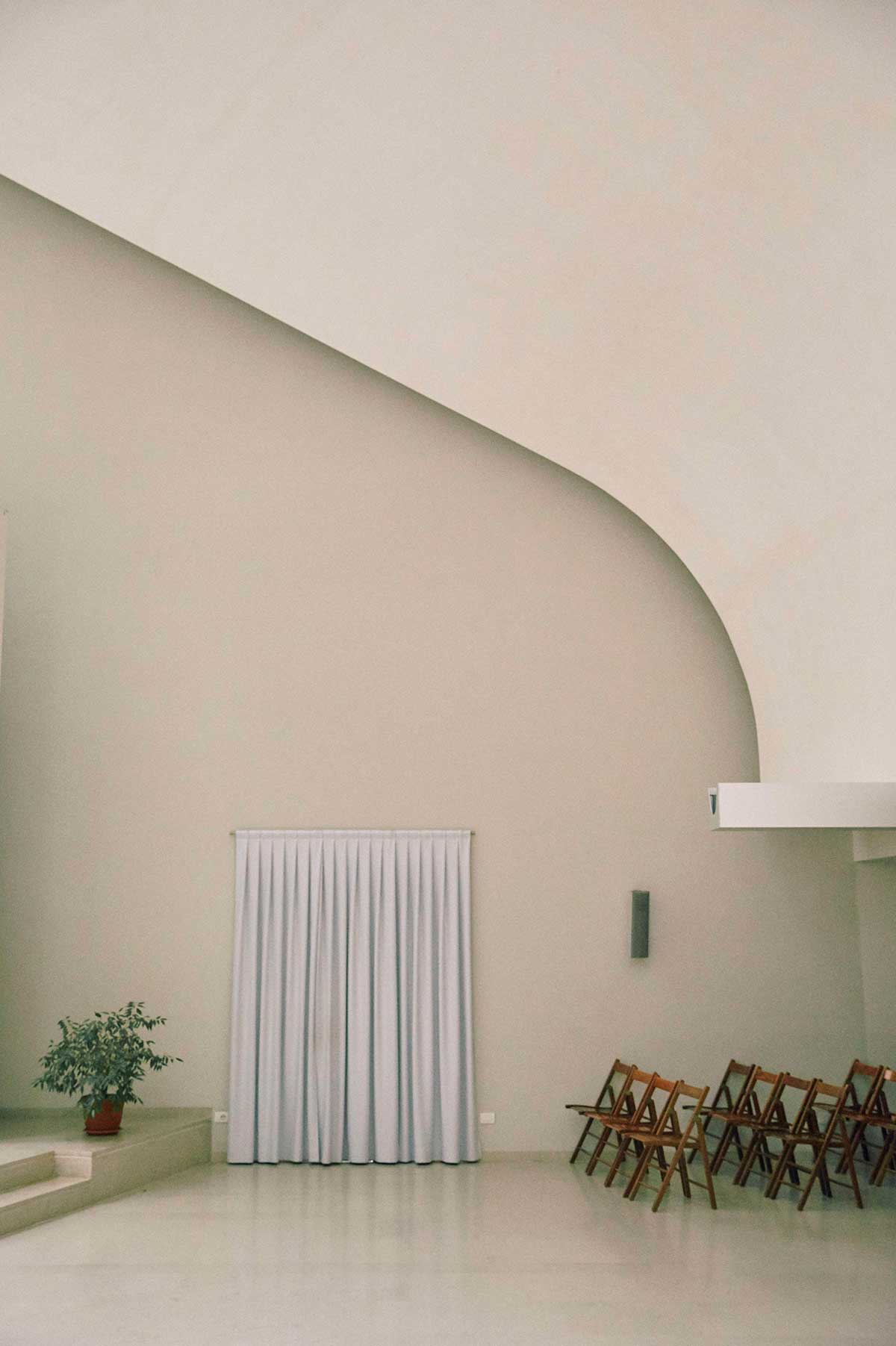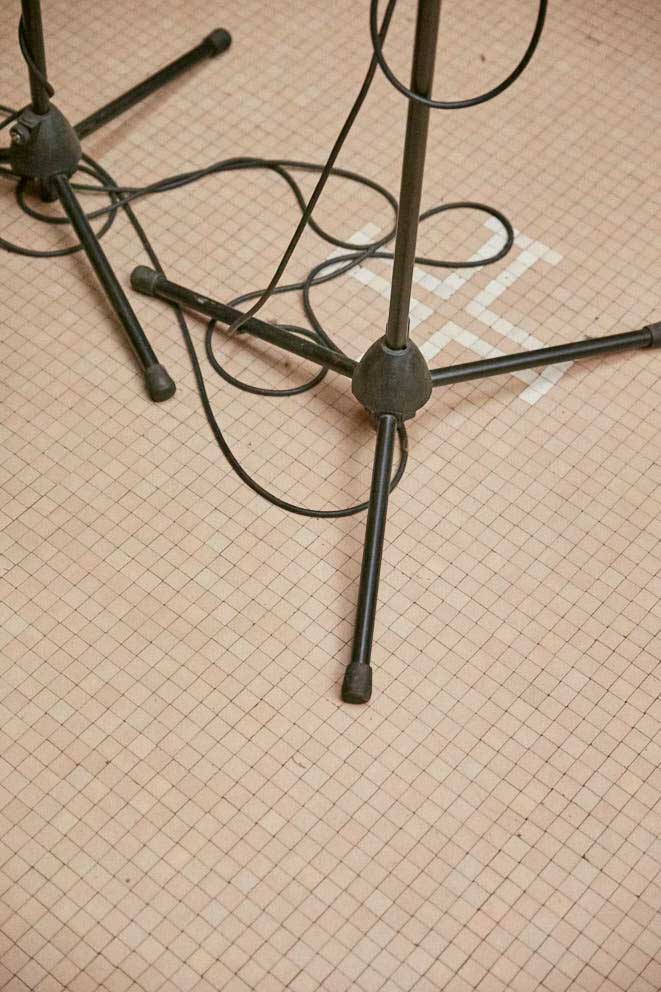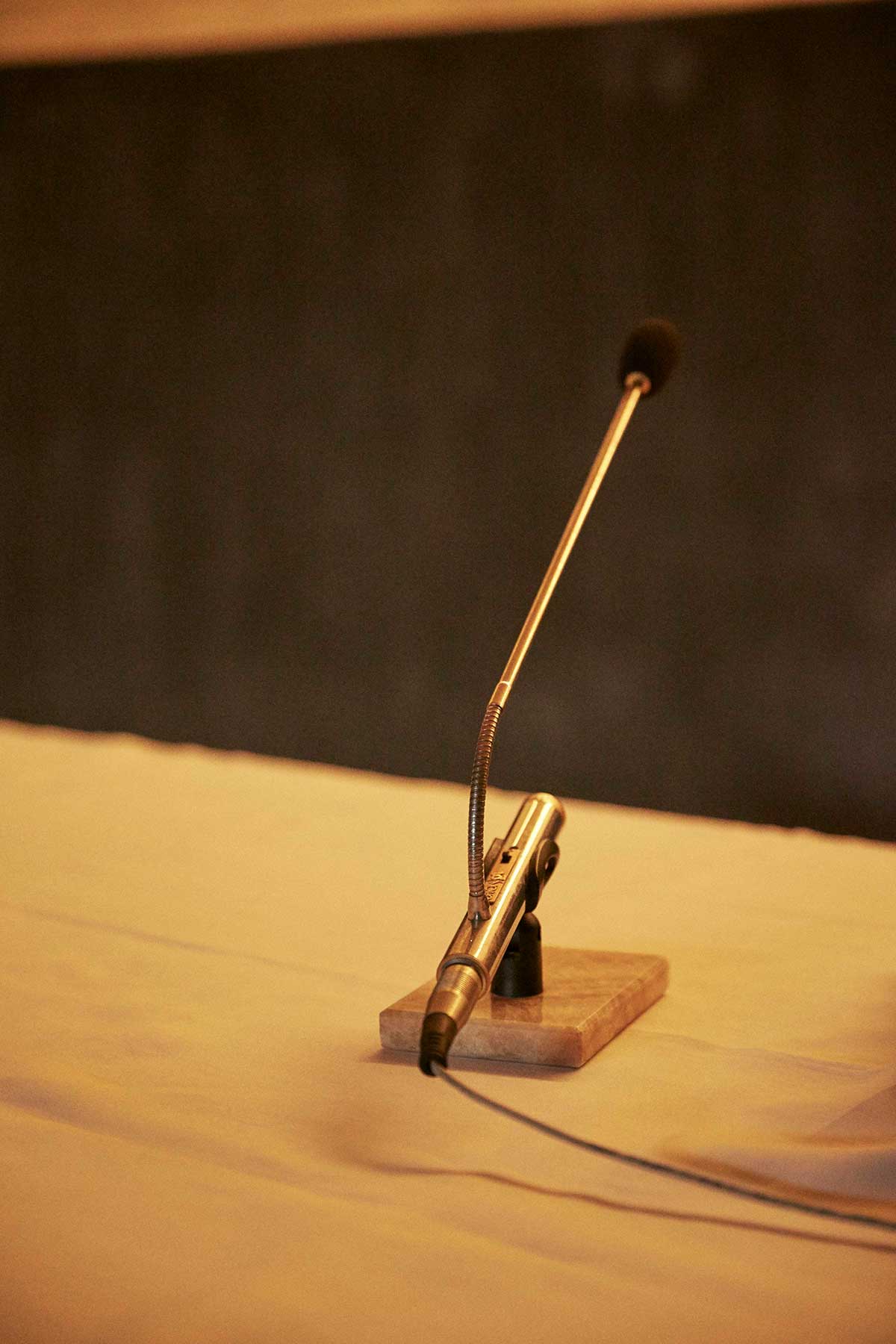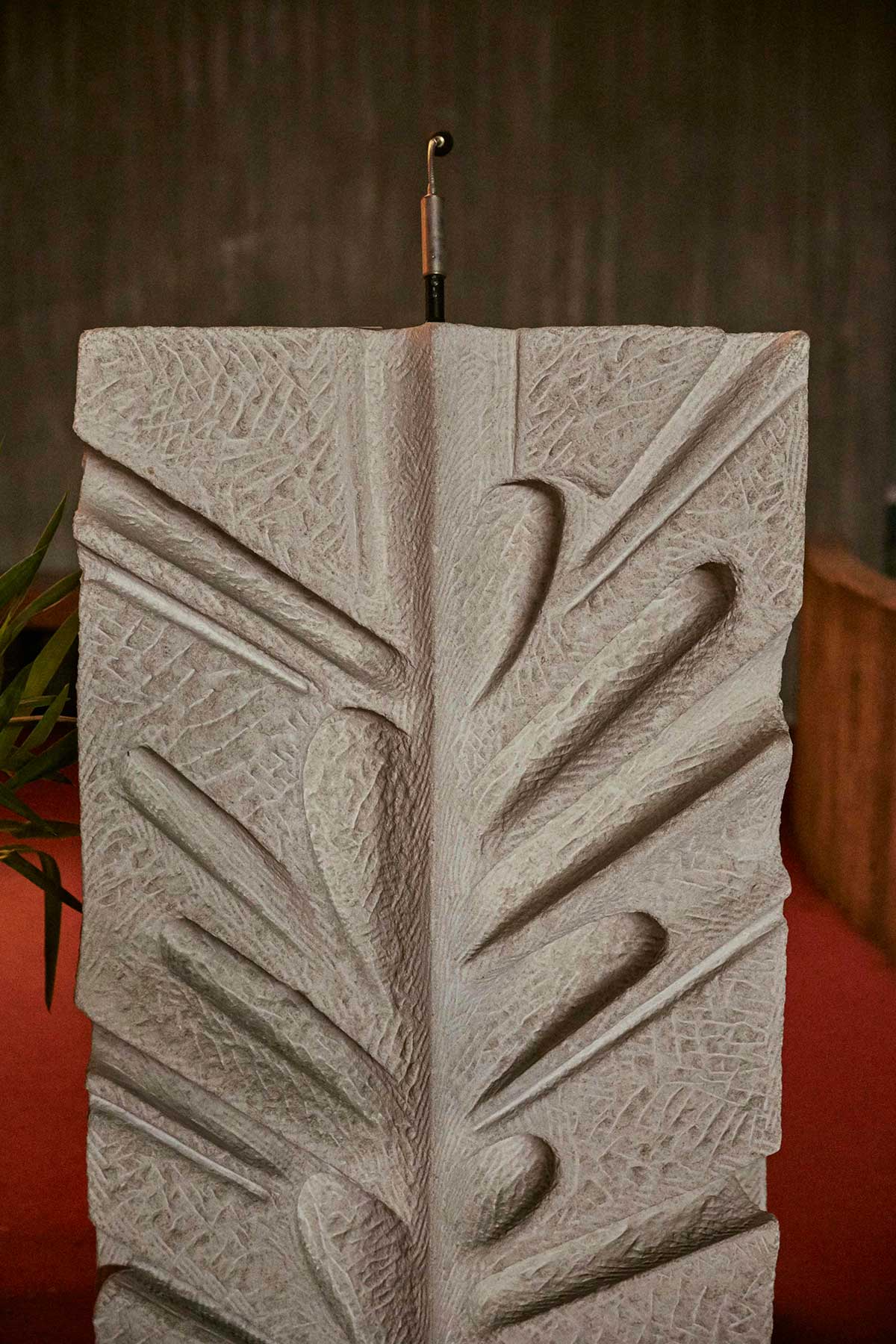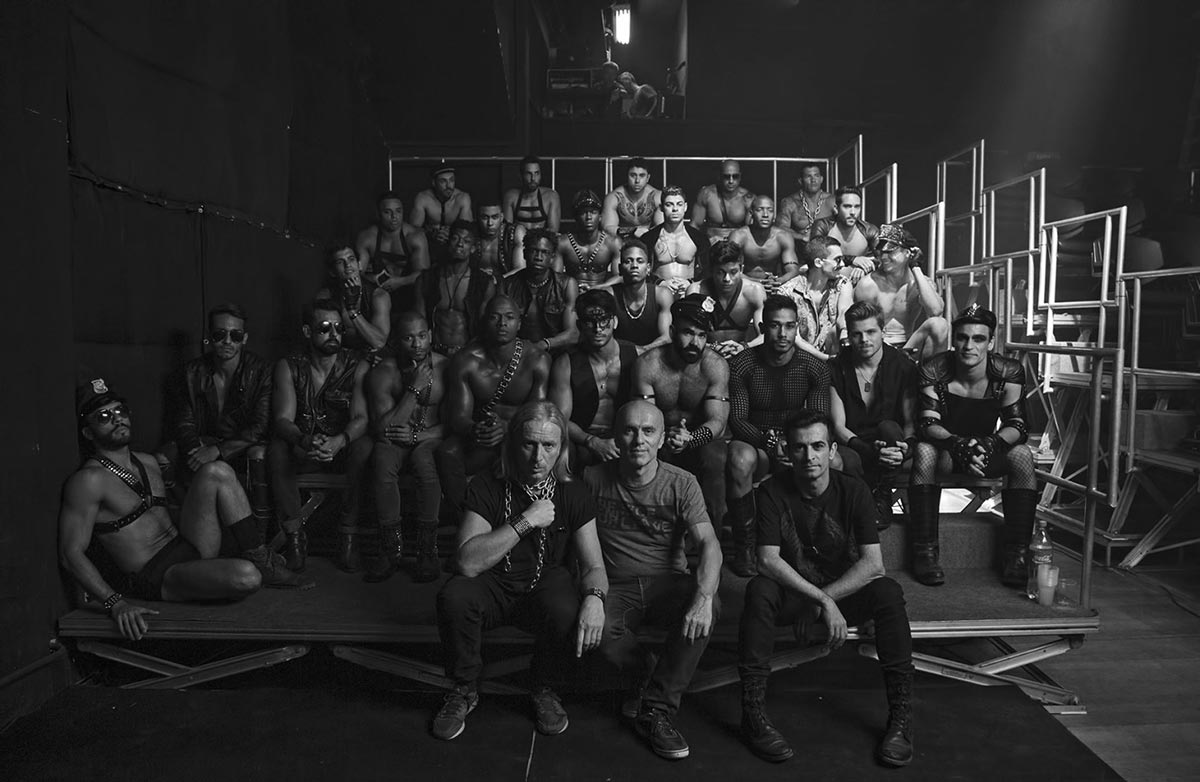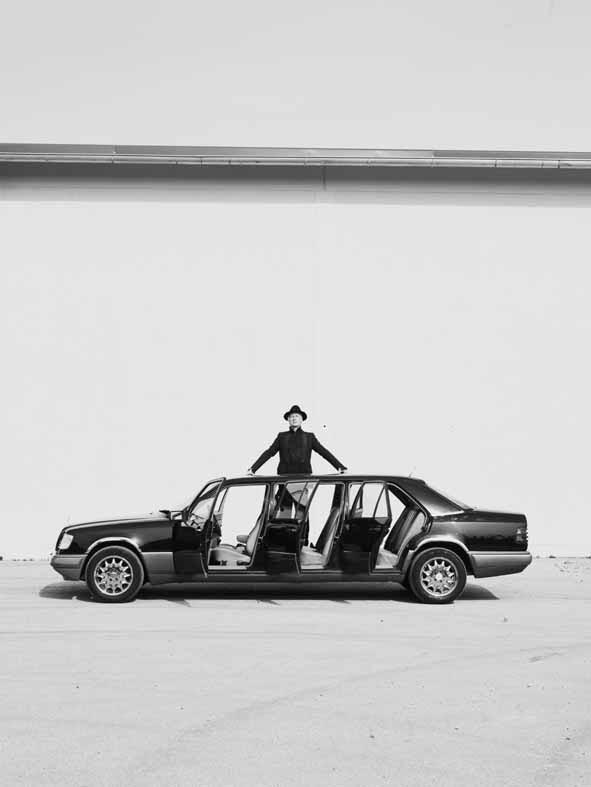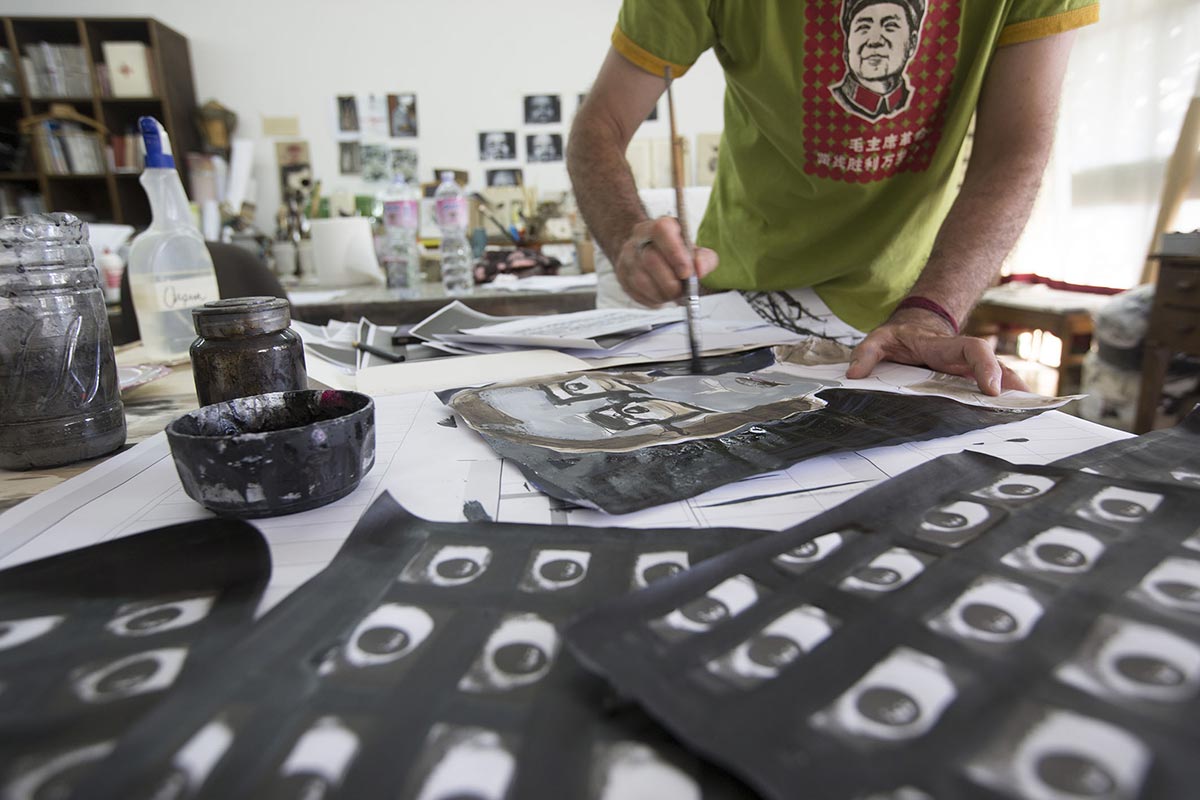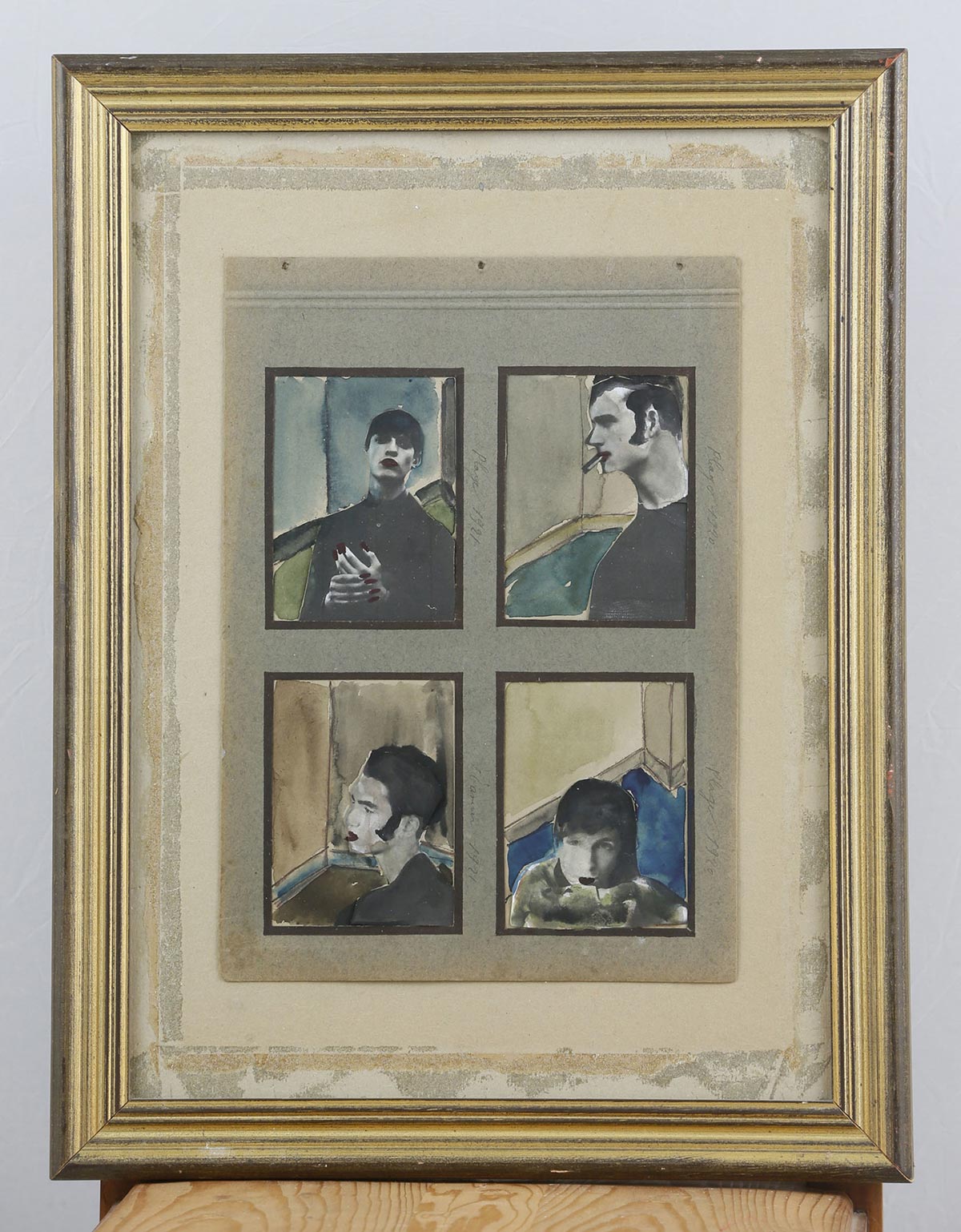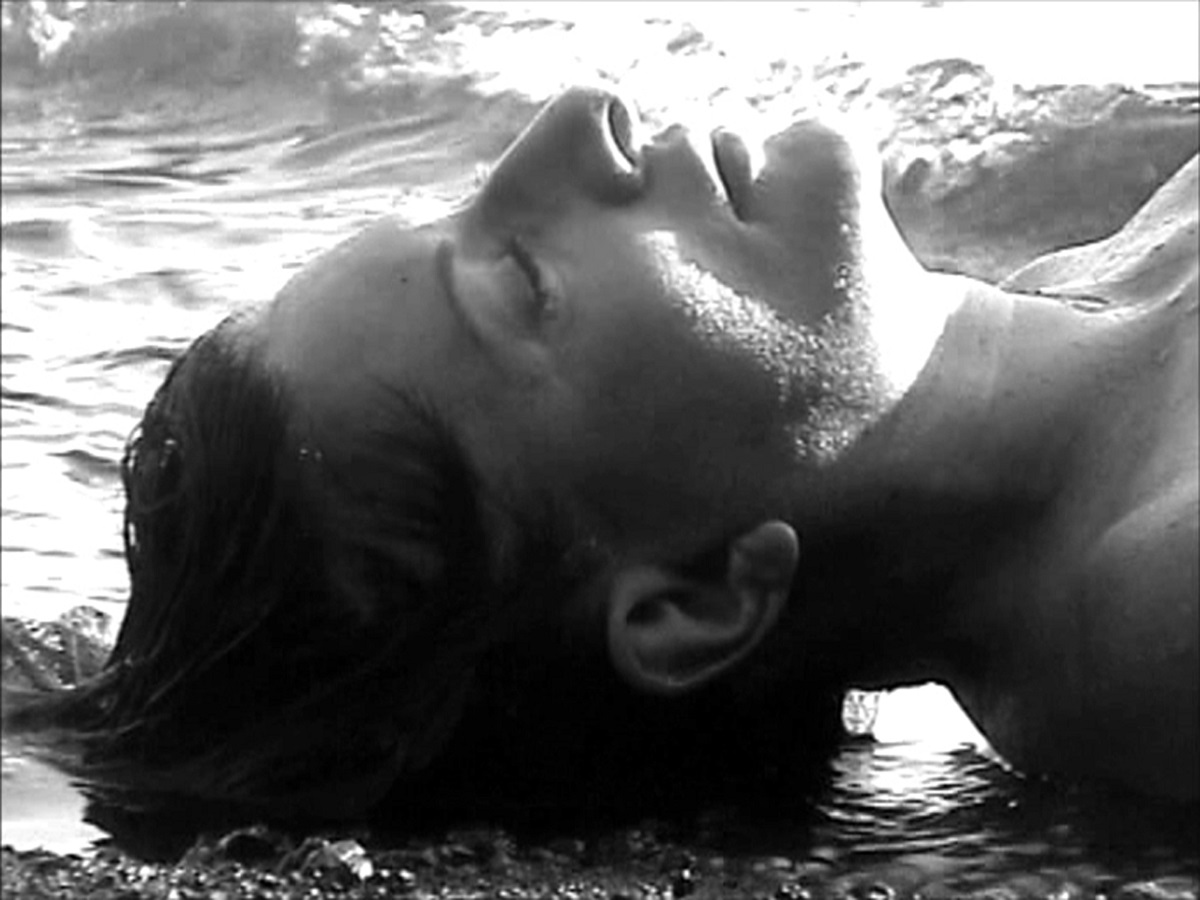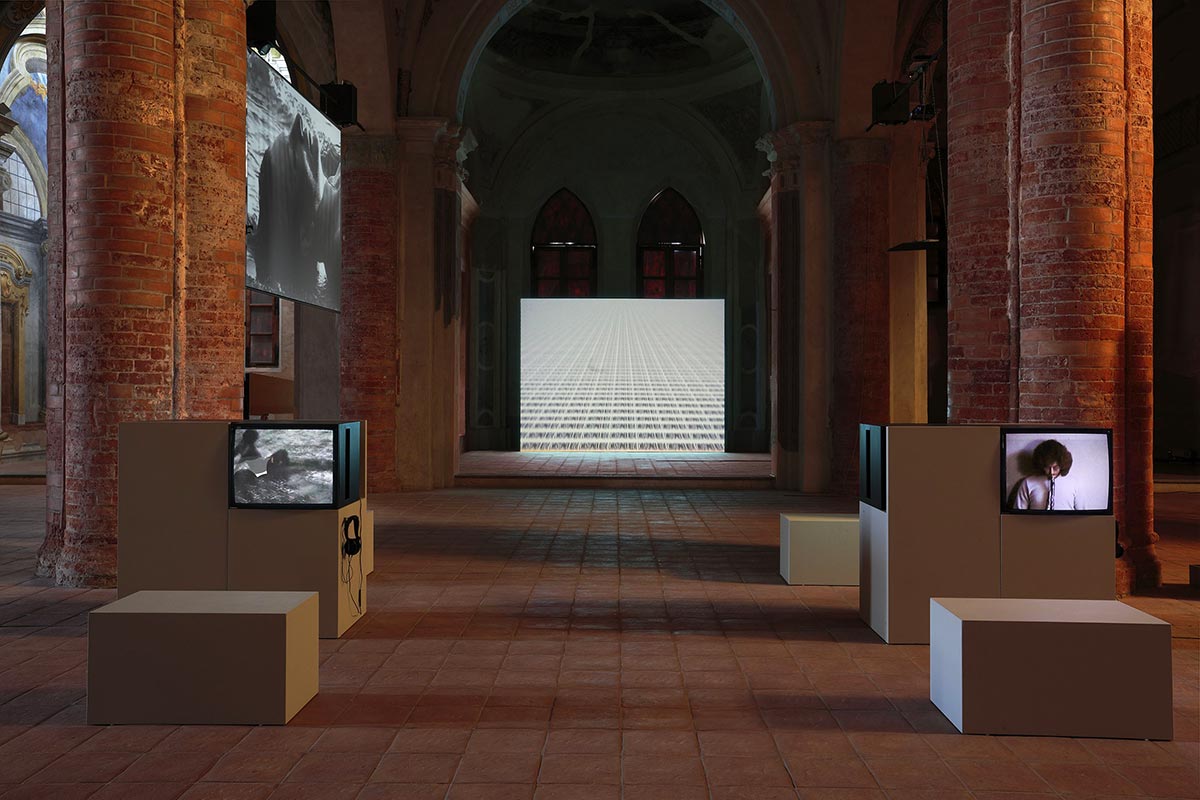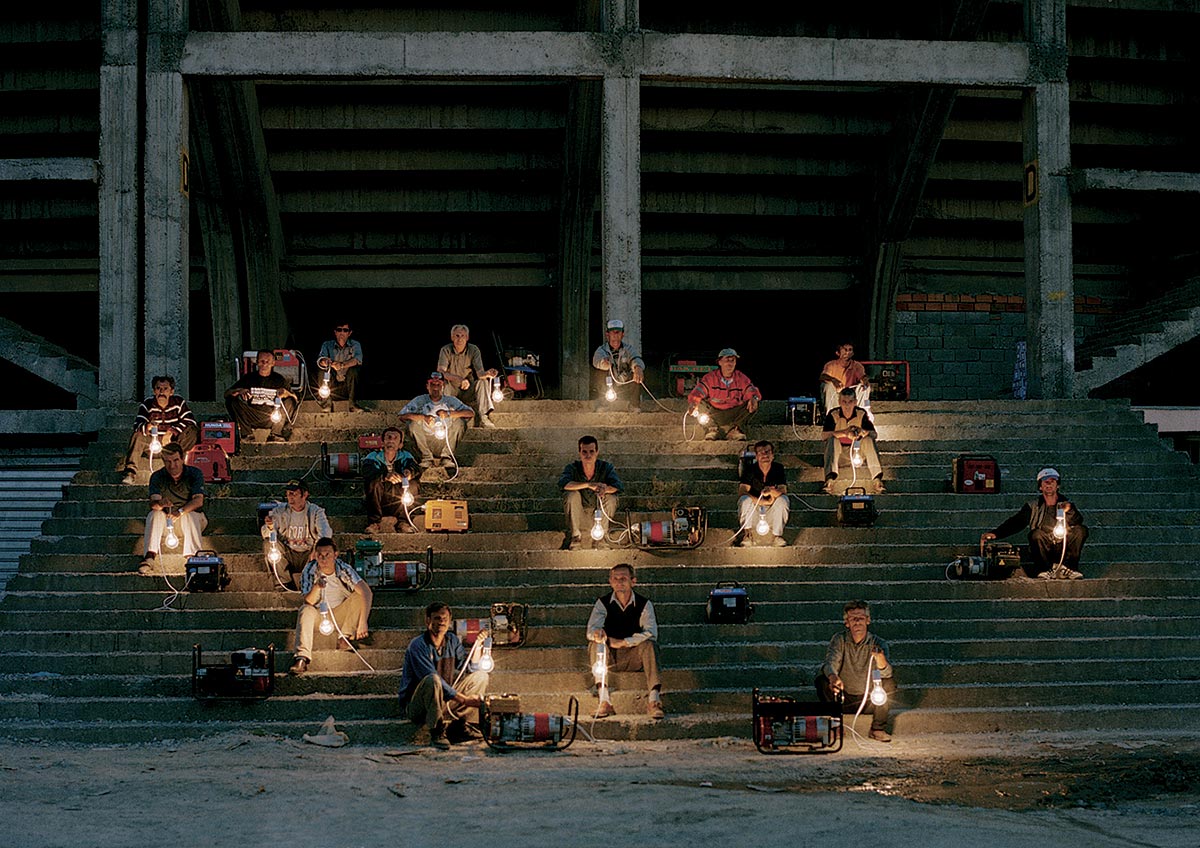Churches: a contemporary portfolio
Photography by Stefan Giftthaler

Why photograph Milan’s contemporary churches?
The story of a unique architectural ensemble.
“First I drew a box that looked like a house. I could have been the house I lived in.
Then I put a roof on it. At either end of the roof I drew spires. Crazy (…)
I put on windows with arches. I drew flying buttresses.
I hung great doors. I couldn’t stop”.
Raymond Carver, Cathedral
What is a church like today? American architect Peter Eisenman posed just this question in his design report presented upon invitation to the International Architecture Competition for the Church of 2000. But the question one should ask, as he himself admitted, is different. What is architecture like today?
Speaking of religious buildings entails going beyond the spiritual value of the work. And this holds particularly true in the archdiocese of Milan, the sole commissioning party, unique not only due to its size (encompassing more than 1100 parishes, it is one of the largest dioceses in the world) but also to its liturgy, which is Ambrosian, different from the commonly adopted Roman rite.
The churches portrayed in this project, built since the 1950s, tell a significant part of the history of Milan and its outlying areas. They tell everything from the burgeoning population after World War II up to the Catholic Church’s new requirements for renewal and dialogue with contemporary times, expressed by the Second Vatican Council. Yet there is much more. This unprecedented itinerary brings out a special time in architecture. A series of well-known designers, including Gio Ponti and Cino Zucchi, or even unknown designers, are anxious to experiment with new formal languages and measure themselves up to the complexity of a building whose function is declaredly representative and must respond to specific codes and values, in aesthetic, technical, and semantic and liturgical terms. The buildings selected are striking due to the variety of the solutions expressed. The materials, the light, the compositional geometry and the colours all hinge around an unvarying cannon. If there is any common element to be found in these spaces — sacred and inhabitable alike, physical and spiritual alike and therefore finite and infinite alike — it is subtraction, understood as the ability to condense.
From the centre of Milan to Varese, through the various parish churches in Milan’s archdiocese, the anti-rhetorical work of photographer Stefan Giftthaler, curated by the Anticàmera agency, aims to generate a mapping of the territory that brings to mind a re-appropriation. It is an analysis that rediscovers much loved and much hated architecture, never trivial but often undervalued. As integral parts of neighbourhoods and small villages, the churches chosen stand as points of reference in the everyday lives of their communities. Whether they are lay or believers it hardly matters. Because Milan, like Proust’s Combray in In Search of Lost Time, “was no more than a church epitomising the town, representing it, speaking of it and for it to the horizon”.
Text by Annalisa Rosso
Anticàmera
anticamera-location.com
@anticamera_location
Stefan Giftthaler
stefangiftthaler.com
@stefangiftthaler
Music, sexuality and future
DJ Hell brings us to his universe.
After a three year silence Helmut Josef Geier aka “DJ Hell” is back with his new single “I Want You”, from the upcoming album “Zukunftsmusik” that will be released next spring. The devil at the service of love, for a while leaves hell and tells us about himself.
Hello Hell, how are you?
I am fine, thank you.
What do you see in front of you at the moment?
Right now at home, in my living room – with lots of records, magazines and a big photo of Andy Warhol on the wall.
I’ve seen and loved your “I want you” video, already a success on the web. I have been really surprised to see Tom of Finland’s drawings. The world of gay visual art is so big, so I am curious to ask you: why did you choose right him?
Tom of Finland is a superb artist. To me, personally, he is one of the most influential and groundbreaking artists of the last century, simply because Tom´s paintings and fantasies have opened doors for so many people all around the world.
In addition, all my work and my world are based on gay culture, since house music was produced and played by homosexual men and the club culture itself started in the late ’70s gay discos & clubs scene in NYC and Chicago.
Therefore it was just a logical step to enter into a very fruitful partnership with the Tom of Finland Foundation.
The pop aesthetic seems to fit really well the synth: is the electroclash easier to impress through images?
I totally agree with the pop-art aesthetics and feel very honored that more and more people really understand what I am trying to say here.
It also fits with the electroclash image, a musical genre invented by myself and my label International DeeJay Gigolo Records.
The company has been using images of naked cowboys for many years, while in 2003 I signed a deal with beautiful Amanda Lepore to be the logo of my company. Most of the producers and DJs inside Gigolo came out of the queer world and for us there was no difference nor barriers.

Also the showy sexuality is fit for your music. Do you think talking about man-to-man love is still worthy?
Dance music without sexuality doesn’t work out at all, and as for man-to-man love, there is never talked about enough in this world, so I am following Tom´s words: “I want to show that gays can feel happy together – that they have the right to be happy together”.
Let’s talk about music. Where did your first album single “I want you” take inspiration from?
To me I wanna represent the past, the present and the future. For this song I went into the early days of techno and at the same time I took a close look into the future.
I call it proto-techno but this will not entirely reflect the whole album which is coming up this spring.
Your music comes from the ’80s and it seems that the ’80s are ending with this 2016, a year that will be remembered for the tragic losses the world of music has suffered.
I agree. It was a shock for everybody and myself to lose David Bowie, Prince, George Michael, Alan Vega, Lemmy, Leonard Cohen, Vanity, Leon Haywood, Pete Burns, Colonel Abrams, and many more.
Tell me about your next album, where are you going to take us after Fukushima?
The new album is called “Zukunftsmusik” and the title says it all already. I put all my DNA in there and it will be very personal.
If the album is really going to change the world – I don’t know yet.
What time will you wake up tomorrow morning?
11:00 or 12:00… It depends, because when I travel and play the same night and do this since 35 years all around the world, I need to sleep 9 hours a day to recover.
Most of the time I take out the last flight possible to get a long sleep!
Interview by Daniele Pratolini
Big thanks to Nadine Dinter
Photo by Daniel Mayer

NULLA DIES SINE LINEA
I saw but I see but I saw you drawing, drawing, drawing.
Antonio Marras, who rises against “purisms”, is about to invite us to embark on the voyage, a nomadic voyage to the land of memory: silence, voice, silence. He questions with intellectual curiosity an anarchic, chaotic and erratic female figure. Antonio Marras, speaking the language of experimentations, takes us through his footsteps, (re)elaborating the seen and unseen artifacts, drawings, paintings (… that do give witness to the emotive realities of the narrator). Through a series of installations, he illustrates his researches, defining and redefining the nature of the fashion alphabet as universal: fabric, frame, fabric.
Antonio Marras: Nulla dies sine linea, an anthological exhibition curated by Francesca Alfano Miglietti, opens its doors at La Triennale di Milano today October 21.
You saw me, me waiting, thinking, waiting for you to draw me in waters of restlessness.
by Marco Martello



My east is your west
Animated light installation in Puglia.
c.a.p.74024 has some very special feelings about Puglia.
Now in Gagliano del Capo, to the south from Lecce, Capo d’Arte, a not-for-profit association promoting contemporary art in Puglia, presents the seventh edition of its annual festival.
For this year, one of the most relevant artists in Asia is presented there: Shilpa Gupta (Mumbai, India, 1979) with her work “My east is your west”, which is installed in the main square of Gagliano del Capo. The work is placed on Palazzo Daniele’s rooftop – Capo d’Arte’s headquarter, a historic building which dates back to the XIX century.
The piece is an imposing and thought-provoking neon light installation that makes viewers reflect upon prejudice and that acquires a deeper meaning with its new setting on the Mediterranean, which has now become an epicenter of migrations and conflicts.
Due to its interwoven letters, “My east is your west” suggests a sense of circularity and reciprocity, halfway between illegibility and clarity, orientation and confusion. The meaning of the sentence only reveals itself when the pulsating light rearranges the letters and, at the same time, the 10 meters artwork illuminates the square below.
The installation will remain there for at least 3 years.
Address: Corso Umberto I, Gagliano del Capo (LE)

The new Riva icons
Rivamare and Riva 76' Bahamas.
Imagine that you’re in Portofino.
Beautiful port, Bellini for 40€, the most expensive boutiques. And there is this guy strolling – with an excellent tan, topsiders (no socks, of course), white pants and polo. No doubts: he arrived here with his boat and docked it only to have a lunch on the ground. If he is a real Italian (or tries to live like one) – his boat must be Riva, a legend in the yachting world. If you’re new to the world of luxury, learn this brand – it’s a synonymous with design and style in the nautic industry.
For the next level of yacht knowledge remember these names – Rivamare and Riva 76′ Bahamas. They are the new models of Riva boats. During some event with the best prosecco and extremely rich people some name dropping can be really helpful. Rivamare is 11.88 metres long with a full beam of 3,5 metres, has 3 color options, the deck is casing in chrome plated aluminium alloy, the maximum speed is 40 knots. Innovative, sporty, yet keeping the best of the Riva tradition. Riva 76′ Bahamas is 23,25 metres with the maximum beam 5,75 metres and the maximum speed is 32 knots.
c.a.p.74024 had a pleasure of joining the Riva team at the factory where these most chic boats are produced. And also we had a chance to get the amazing experience of riding one of their speedboats and can say that Riva boats have the huge mark of Italian quality and excellence.
Text: Irene Belous
The Moving Tales
Video works from the La Gaia Collection.
What is the most unexpected thing to see in the medieval church? TV? Naked people? Freddie Mercury with Madonna (Luisa Ciccone one)? Marina Abramovic?
Well, you have a chance to see all of it. In Cuneo, a small town located in 3 hour ride by car from Milan, there is the Complesso Monumentale di San Francesco – including the deconsecrated Church built in 15th century. Since 1980 it houses the Museum, that is telling about the history of the city. Now it hosts 30 videos from Italian and international artists, all the works are selections of the Gaia Collection, created by Bruno and Matteo Viglietta in 1970s. The Gaia Collection comprises over 2000 pieces of modern and contemporary art.
The choice of works for “The Moving Tales” illustrates many different ways in which video can be used as a narrative image-based tool. In fact, it can be a good start even for those who are quite skeptical about videos as a contemporary art form (like the author of these lines).
The impression that you get from the contemporary art put in a religious surroundings is shocking – and carrying away. The idea to use the space is fresh and extremely smart. One of the first showpieces is Douglas Gordon’s “Scratch Hither”, so short but meaningful in its inviting tone. And of course the main eye-catcher is Candice Breitz’s “Babel Series” (7 vintage TVs showing looped stage performances of Prince, Grace Jones and other music icons) placed right under the huge rood cross.
At some point you realise that there is this weird feeling – you are trying to move silently and whisper instead of speaking with the normal tone of voice. Either that’s a fact of being in deconsecrated but still church, or the impact of screens, moving faces and looped tales.
Complesso Monumentale di San Francesco
Cuneo, Via Santa Maria 10
From Friday 24 June 2016 to Sunday 28 August 2016
Tel. 0171 634175
Opening times:
Monday: closed
Tuesday – Saturday: 3.30-6.30 pm
Sunday and holidays: 3.30-6.30 pm
Text: Irene Belous
Photo: Maurizio Elia and Matteo Borzone, Irene Belous
